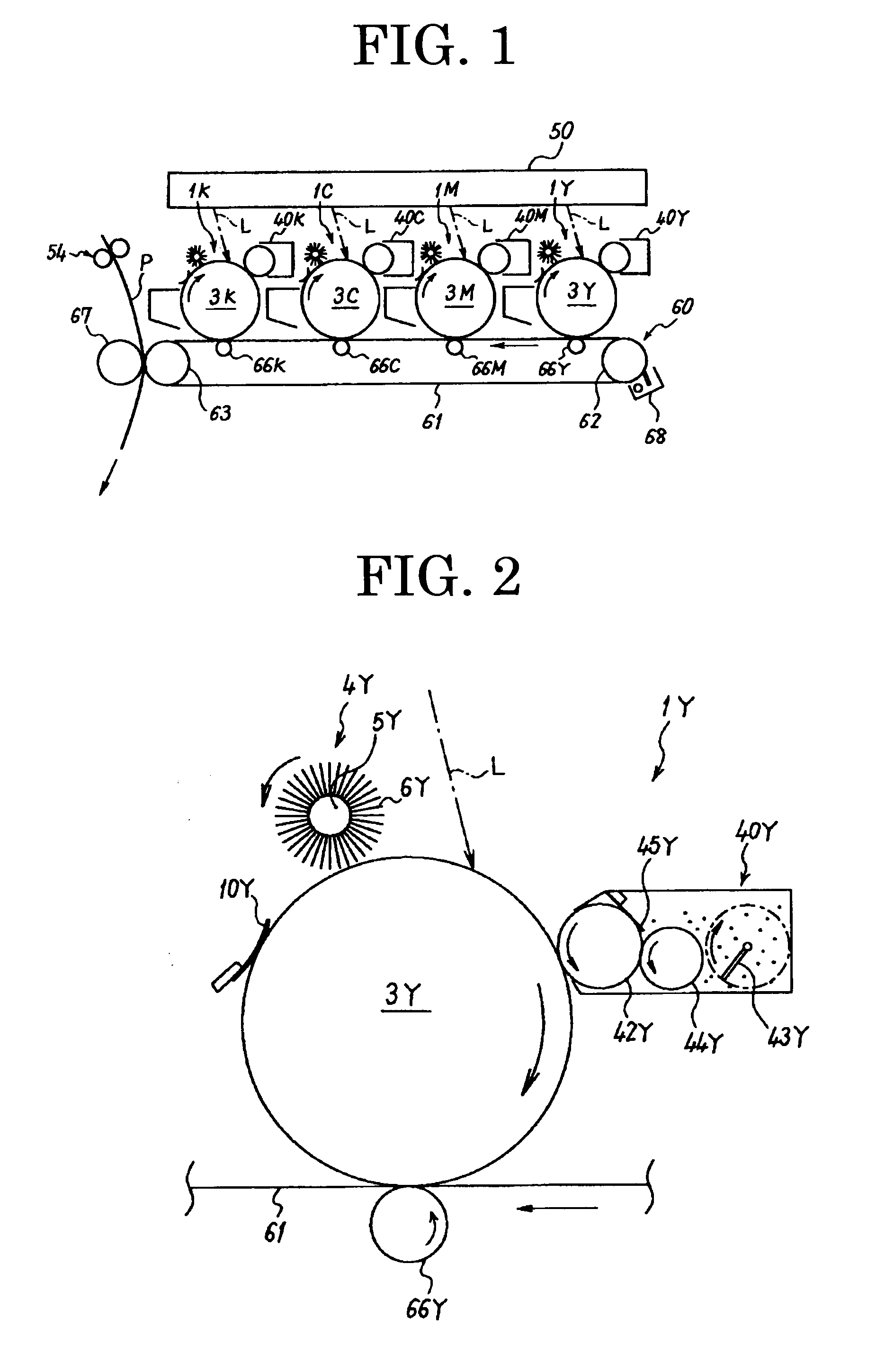Toner for developing latent electrostatic image, process cartridge and image forming method
a technology of latent electrostatic image and process cartridge, which is applied in the field of toner for developing latent electrostatic image, process cartridge and image forming method, can solve the problems of reducing image quality, poor fluidity of toner as powder, and poor filling rate of toner bottles, etc., and achieves excellent fixing properties, resisting stress, and sufficient charge amount
- Summary
- Abstract
- Description
- Claims
- Application Information
AI Technical Summary
Benefits of technology
Problems solved by technology
Method used
Image
Examples
example 1
[0121]In a four-neck vessel, 340 parts of ion-exchanged water and 380 parts of a 0.1 mol / l aqueous Na3PO4 solution were poured, and kept at 60° C. while stirring at 15,000 rpm by a homomixer, high speed stirrer. Subsequently, 30 parts of a 1.0 mol / l aqueous CaCl2 solution was gradually added to prepare an aqueous dispersion medium containing a poor water-soluble, fine dispersion stabilizing agent Ca3(PO4)2.
[0122]A mixture consisting of the dispersing substances described below was dispersed by Attriter (manufactured by MITSUI MINING & SMELTING CO., LTD.) for 3 hours, and then 3 parts of 2,2′-azobis (2,4-dimethylvaleronitrile) was added to prepare a polymerizable monomer composition. The dispersing substances were as follows:
styrene83 parts n-butylacrylate17 parts copper phthalocyanine pigment5 partsClaytone APA2 partszinc salicylate E-304 (manufactured by Orient Chemical0.8 parts Industries, Ltd.)paraffin wax (melting point: 73° C.)5 partspolyester resin (Mw = 25,000, acid value: 1...
example 2
[0132]Toner base particles 2 were produced in the same manner as in Example 1, except that the amount of Claytone APA was changed from 2.0 parts to 1.0 part, and then Toner 2 was produced.
example 3
[0133]Toner base particles 3 were produced in the same manner as in Example 1, except that the amount of Claytone APA was changed from 2.0 parts to 0.15 parts, and then Toner 3 was produced.
PUM
| Property | Measurement | Unit |
|---|---|---|
| glass transition temperature | aaaaa | aaaaa |
| diameter | aaaaa | aaaaa |
| thickness | aaaaa | aaaaa |
Abstract
Description
Claims
Application Information
 Login to View More
Login to View More - R&D
- Intellectual Property
- Life Sciences
- Materials
- Tech Scout
- Unparalleled Data Quality
- Higher Quality Content
- 60% Fewer Hallucinations
Browse by: Latest US Patents, China's latest patents, Technical Efficacy Thesaurus, Application Domain, Technology Topic, Popular Technical Reports.
© 2025 PatSnap. All rights reserved.Legal|Privacy policy|Modern Slavery Act Transparency Statement|Sitemap|About US| Contact US: help@patsnap.com


